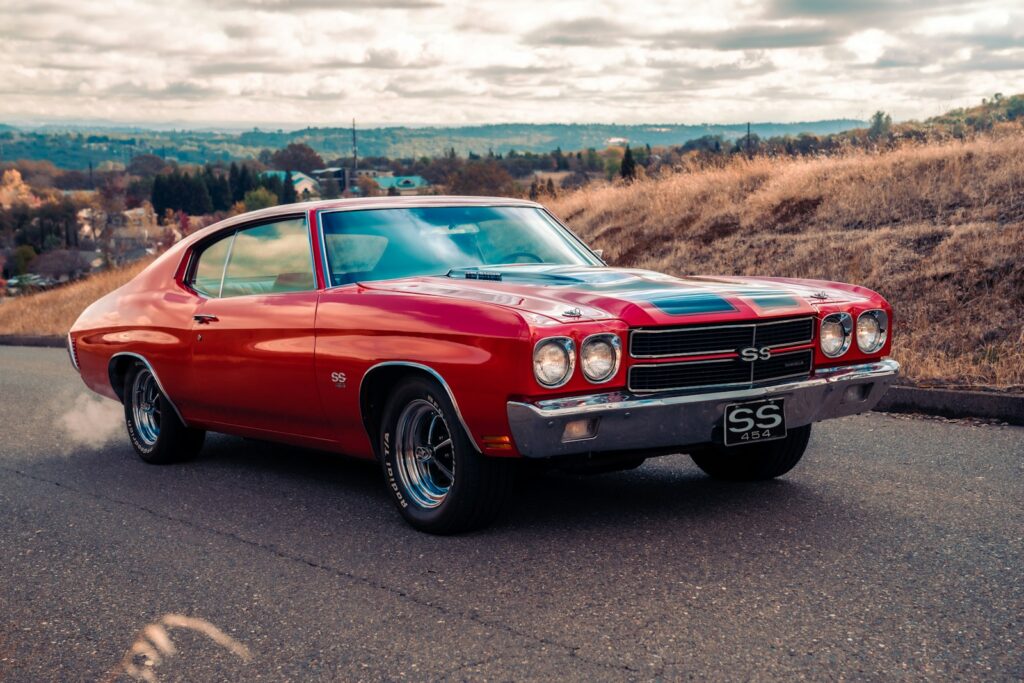
The automotive landscape is a fascinating realm where nostalgia and innovation constantly intersect, often creating distinct generational preferences that shape market dynamics. For many Baby Boomers, certain classic cars evoke powerful memories of a golden age of motoring, embodying style, power, and a sense of freedom that defined an era. These vehicles, with their distinctive designs and often prodigious engines, were once the pinnacle of American automotive aspiration, status, and engineering. They represent a significant chapter in the industry’s rich history, from personal luxury coupes to quintessential muscle machines.
Yet, as time marches on, a curious phenomenon has emerged: the very cars cherished by Boomers are often met with indifference, or even criticism, by the Millennial generation. This isn’t merely a matter of differing tastes; it’s a reflection of a fundamental shift in values, priorities, and what defines a ‘desirable’ vehicle in the modern world. Where Boomers saw a symbol of their youth and prosperity, Millennials often perceive outdated technology, impractical dimensions, and a disconnect with contemporary environmental and economic concerns. This generational divide creates a compelling narrative about how automotive appeal is re-evaluated through the lens of changing consumer demands.
In this extensive exploration, we delve into a selection of classic Boomer cars that Millennials are demonstrably passing over. We will examine each vehicle’s historical context, its defining characteristics that garnered Boomer adoration, and critically, dissect the precise reasons why younger buyers are steering clear. From the majestic land yachts to the raw power of early muscle cars, understanding this divergence offers invaluable insight into the evolving automotive market and the distinct criteria that now drive purchasing decisions across generations.
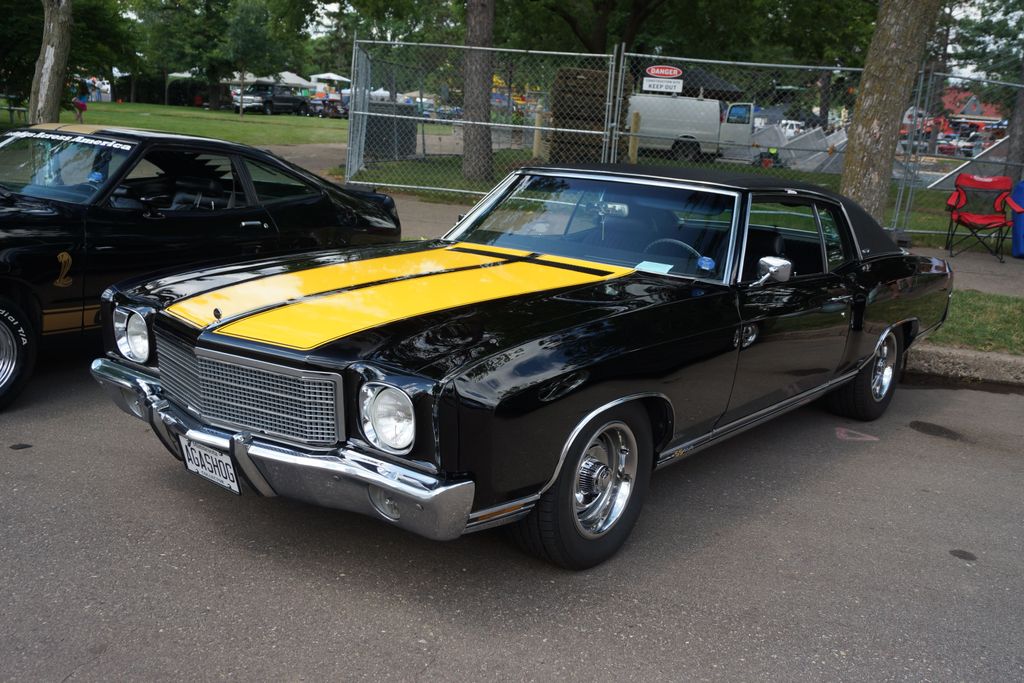
1. **Chevrolet Monte Carlo** The Chevrolet Monte Carlo, a name synonymous with personal luxury and muscle car prowess, enjoyed a robust production run from 1970 to 2007. It truly hit its stride in the 1970s and 1980s, offering a potent combination of performance and undeniable style. Characterized by its impressively long hood and distinctive design, the Monte Carlo frequently featured a range of powerful V8 engines that delivered exhilarating drives for its enthusiasts. It was a vehicle that exuded confidence and was a staple on American roads, reflecting an era where size and presence were highly valued.
For Boomer drivers, the Monte Carlo was more than just a car; it was a statement. Its retro styling, combined with a surprisingly spacious interior, made it an appealing choice for both spirited cruising and comfortable daily use. The availability of powerful engine options meant that drivers didn’t have to compromise on performance, cementing its status as a desirable coupe. It offered a unique blend of sportiness and refinement, a true personal luxury car that many aspired to own, often becoming a cherished part of family history and personal milestones.
However, the very attributes that made the Monte Carlo a Boomer icon have become deterrents for Millennial buyers. The car’s substantial size is often viewed as unwieldy for modern urban environments and parking constraints. Perhaps its most significant practical drawback, the fuel inefficiency inherent in its powerful V8 engines, clashes starkly with younger generations’ heightened awareness of fuel economy and environmental impact. Furthermore, the unfortunate perception that it’s an “old man’s car” can be a significant psychological barrier, making younger buyers hesitant to embrace its vintage charm despite its potential for retro appeal.
Ultimately, while the Monte Carlo offers a spacious interior and powerful engine options, its large footprint and thirst for fuel position it outside the preferences of many younger buyers. Millennials are increasingly drawn to more modern, fuel-efficient vehicles that offer a blend of contemporary technology, practical utility, and a more eco-conscious profile, making the Monte Carlo, for all its historical grandeur, a frequent pass-over in today’s market.
Car Model Information: 2021 Jeep Grand Cherokee Laredo X
Name: Chevrolet Monte Carlo
Manufacturer: Chevrolet
Production: 1969–1987,1994–2007
ModelYears: 1970–1988,1995–2007
Class: Personal luxury car
BodyStyle: coupé
Layout: FR layout
Caption: 2006 Chevrolet Monte Carlo LS
Categories: 1980s cars, 1990s cars, 2000s cars, All Wikipedia articles written in American English, All articles needing additional references
Summary: The Chevrolet Monte Carlo is a two-door coupe that was manufactured and marketed by the Chevrolet division of General Motors. Deriving its name from the city in Monaco, the Monte Carlo was marketed as the first personal luxury car of the Chevrolet brand. Introduced for the 1970 model year, the model line was produced across six generations through the 2007 model year, with a hiatus from 1989 until 1994. The Monte Carlo was a variant of the Pontiac Grand Prix throughout its production.
From 1970 until 1972, the Monte Carlo rode on the unique “A-Special” platform with the Grand Prix, shifting to the standard A-body intermediate chassis from the 1973 through 1977 model years. For 1978, the Monte Carlo line underwent downsizing, but was still considered a midsized coupe. The rear-wheel drive A-body platform of this generation of Monte Carlo was redesignated as the G-body when GM’s front-wheel drive A-body cars were introduced for the 1982 model year. After an abbreviated 1988 model year, the Monte Carlo was replaced by the two-door Chevrolet Lumina.
For the 1995 model year, the Monte Carlo was revived, replacing the two-door Lumina. It shared the front-wheel drive W-platform with the two-door Grand Prix, and was the largest coupe in the Chevrolet lineup. After the 2002 model year, the Grand Prix coupe was discontinued, the Monte Carlo became the largest two-door model produced by an American auto manufacturer.
In response to declining sales of the model line, Chevrolet discontinued the Monte Carlo after the 2007 model year. During much of its production, the Monte Carlo represented the Chevrolet brand in stock car racing. During the 1980s, the Monte Carlo SS was introduced, featuring aerodynamically enhanced styling; as part of its revival, the Monte Carlo again represented Chevrolet in stock car racing from 1995 through its discontinuation.
Get more information about: Chevrolet Monte Carlo
Buying a high-performing used car >>>
Brand: Chevrolet Model: Monte Carlo
Price: $27,316 Mileage: 34,523 mi.
Read more about: Why Millennials Are Swerving Away: Unpacking the Rejection of 12 Classic Boomer Cars
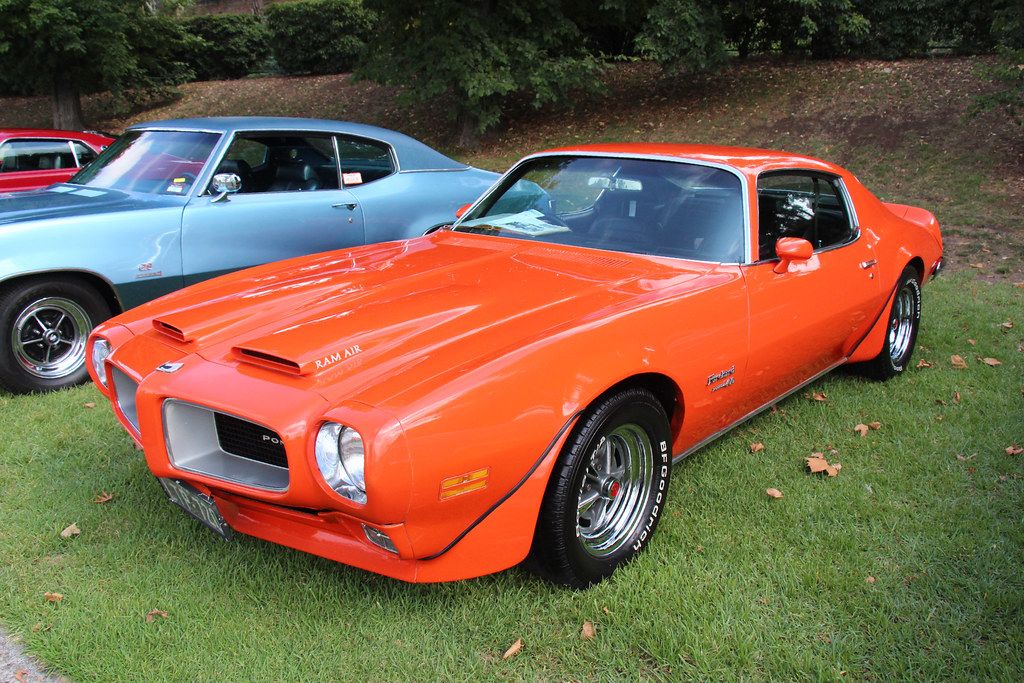
2. **Pontiac Firebird** The Pontiac Firebird, produced from 1967 to 2002, stands as an undeniable muscle car icon. Its legacy is particularly strong through the celebrated Trans Am variant, which achieved legendary status partly due to its unforgettable appearances in the “Smokey and the Bandit” movies. The Firebird was a machine built for excitement, offering a diverse array of engines ranging from robust inline-sixes to formidable V8 powerhouses. Its striking design, often highlighted by the iconic “screaming chicken” hood decal, made it instantly recognizable and a symbol of raw American performance.
For the Boomer generation, the Firebird represented the epitome of automotive thrill and distinctive style. It wasn’t just a means of transport; it was an extension of personal expression, a vehicle that turned heads and delivered an adrenaline-pumping driving experience. The aggressive styling, combined with its powerful engine options, ensured that the Firebird lived up to its muscle car heritage, providing a direct connection to a vibrant era of American automotive culture. It embodied a youthful spirit, speed, and a certain rebellious charm that resonated deeply with its owners.
Despite its celebrated past, Millennials frequently overlook the Firebird due to several critical factors that don’t align with their automotive priorities. A primary concern is its dated technology; modern drivers expect integrated infotainment, advanced safety features, and connectivity that classic Firebirds simply cannot provide without significant aftermarket modifications. Furthermore, the inherent nature of classic muscle cars often translates to higher maintenance costs, a financial commitment many younger buyers are reluctant to undertake for a secondary vehicle or one that requires constant attention.
In essence, while the Firebird’s thrilling performance and striking design could theoretically appeal to a segment of younger enthusiasts, its practical drawbacks are significant. Millennials often gravitate towards newer sports cars that offer not only superior fuel efficiency but also come equipped with the modern amenities and technological sophistication they’ve come to expect. The blend of high performance and low running costs is a formidable combination that the vintage Firebird struggles to match, limiting its broader appeal to a generation focused on convenience and efficiency.
Car Model Information: 1983 Pontiac Firebird Trans Am 2D Coupe
Name: Pontiac Firebird
Caption: The second, third, and fourth generations of,the Pontiac Firebird Trans Am
Manufacturer: Pontiac (automobile)
Production: February 23, 1967 – August 30, 2002
ModelYears: 1967 – 2002
Class: Pony car,Muscle car
Platform: GM F platform
Related: Chevrolet Camaro
Layout: Front engine, rear-wheel-drive layout
Categories: 1970s cars, 1980s cars, 1990s cars, 2000s cars, All articles with dead external links
Summary: The Pontiac Firebird is an American automobile built and produced by Pontiac from the 1967 to 2002 model years. Designed as a pony car to compete with the Ford Mustang, it was introduced on February 23, 1967, five months after GM’s Chevrolet division’s platform-sharing Camaro. This also coincided with the release of the 1967 Mercury Cougar, Ford’s upscale, platform-sharing version of the Mustang.
The name “Firebird” was also previously used by GM for the General Motors Firebird series of concept cars in the 1950s.
Get more information about: Pontiac Firebird
Buying a high-performing used car >>>
Brand: Pontiac Model: Firebird
Price: $22,991 Mileage: 38,257 mi.
Read more about: Why Millennials Are Swerving Away: Unpacking the Rejection of 12 Classic Boomer Cars
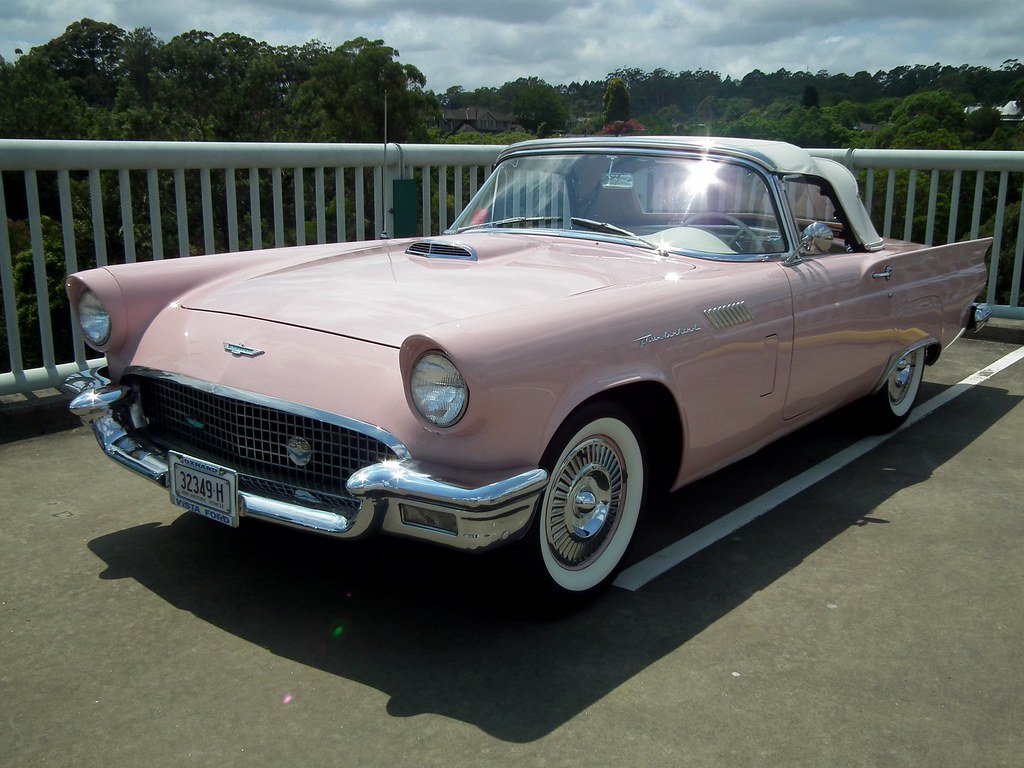
3. **Ford Thunderbird** The Ford Thunderbird holds a unique place in American automotive history, boasting an impressive production run from 1955 to 2005. Over its many generations, it gracefully evolved from its initial iteration as a two-seat sports car into a more substantial luxury cruiser, showcasing Ford’s adaptability and commitment to a changing market. Particularly the models from the 1950s and 1960s, with their iconic V8 engines and elegantly sleek, stylish designs, are deeply cherished by the Boomer generation, often held up as benchmarks of mid-century American automotive design and luxury.
Boomers developed a profound appreciation for the Thunderbird’s timeless design and the robust power delivered by its V8 engines. These vehicles offered a sophisticated driving experience, combining a powerful presence with a comfortable ride, making them highly desirable status symbols. The sleek lines, chrome accents, and distinct grilles of the earlier models, in particular, captured the imagination of a generation that valued both aesthetic appeal and a commanding road presence, making the Thunderbird a beloved fixture in American car culture.
Conversely, Millennials tend to pass over the Thunderbird, often perceiving it as a vehicle primarily intended for older generations. This perception, while perhaps unfair to some of its more dynamic iterations, is difficult to shake. Beyond the generational branding, significant practical considerations deter younger buyers. The lack of modern technology is a notable drawback; features like advanced driver-assistance systems, contemporary infotainment, and seamless connectivity are largely absent. Crucially, the fuel efficiency of many Thunderbird models is a considerable concern, conflicting with the Millennial drive for more economical and environmentally friendly transportation options.
Therefore, despite its classic design and the allure of powerful engines, the Thunderbird’s dated technological suite and significant fuel consumption make it a less attractive proposition for younger buyers. Their preference leans towards vehicles that offer a blend of modern convenience, economic operation, and a design aesthetic that feels current rather than retro, placing the venerated Thunderbird in a challenging position in the contemporary used car market.
Car Model Information: 2003 Ford Thunderbird Premium
Name: Ford Thunderbird
Caption: 1957 Thunderbird
Manufacturer: Ford Motor Company
Production: unbulleted list
ModelYears: unbulleted list
Class: unbulleted list
Layout: Front-engine, rear-wheel drive layout
Categories: 1960s cars, 1970s cars, 1980s cars, 1990s cars, 2000s cars
Summary: The Ford Thunderbird is a personal luxury car manufactured and marketed by Ford Motor Company for model years 1955 to 2005, with a hiatus from 1998 to 2001.
Ultimately gaining a broadly used colloquial nickname, the T-Bird, the model was introduced as a two-seat convertible, subsequently offered variously in a host of body styles including as a four-seat hardtop coupe, four-seat convertible, five-seat convertible and hardtop, four-door pillared hardtop sedan, six-passenger hardtop coupe, and five-passenger pillared coupe, before returning in its final generation, again as a two-seat convertible.
At its inception, Ford targeted the two-seat Thunderbird as an upscale model. The 1958 model year design introduced a rear seat and arguably marked the expansion of a market segment that came to be known as personal luxury cars, positioned to emphasize comfort and convenience over handling and high-speed performance.
Get more information about: Ford Thunderbird
Buying a high-performing used car >>>
Brand: Ford Model: Thunderbird
Price: $14,600 Mileage: 49,430 mi.
Read more about: Why Millennials Are Swerving Away: Unpacking the Rejection of 12 Classic Boomer Cars
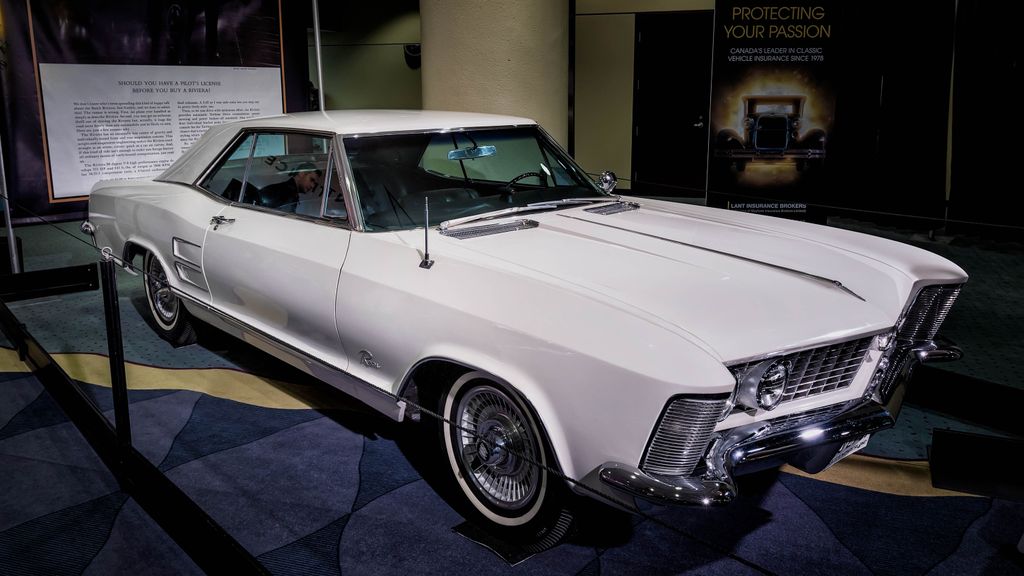
4. **Buick Riviera** The Buick Riviera, which saw production from 1963 to 1999, is celebrated for its distinctive styling and luxurious features. Among its various iterations, the “boat-tail” models of the early 1970s stand out as particularly iconic, showcasing a bold and unique design language that set it apart from its contemporaries. Powered by robust V8 engines, the Riviera focused heavily on delivering a supremely comfortable ride, positioning itself as a legitimate status symbol that epitomized American luxury and sophisticated motoring during its heyday.
For the Boomer generation, the Riviera held considerable appeal, not just for its performance but for its embodiment of classic design and a tangible sense of luxury. It was a car that projected success and refined taste, often becoming a vehicle of choice for those who appreciated vintage aesthetics blended with a powerful, smooth driving experience. The attention to detail in its interior, coupled with its commanding presence, made it a highly sought-after personal luxury coupe, a testament to Buick’s design prowess.
However, Millennials frequently opt to pass on the Riviera, primarily due to practical concerns that clash with modern priorities. Its large size, a hallmark of its luxury and comfort, is now seen as a disadvantage in an era where smaller, more maneuverable vehicles are favored for urban living. The fuel inefficiency associated with its powerful V8 engines is another significant deterrent, as younger buyers increasingly prioritize lower running costs and reduced environmental impact. Furthermore, high maintenance costs often accompany older luxury vehicles, adding another layer of practical challenge.
While the Riviera’s classic design and luxurious features might attract a niche segment interested in vintage aesthetics, these practical issues deter a large majority of younger buyers. The desire for a vehicle that is not only stylish but also economical to operate and maintain, with a smaller footprint, means that the Buick Riviera, despite its historical allure, struggles to find a broad audience among the Millennial cohort.
Car Model Information: 1971 Buick Riviera
Caption: 1963 Buick Riviera
Name: Buick Riviera
Predecessor: Buick Super
Manufacturer: Buick
ModelYears: 1963–1993,1995–1999
Class: Personal luxury car
Categories: 1960s cars, 1970s cars, 1980s cars, 1990s cars, All articles with specifically marked weasel-worded phrases
Summary: The Buick Riviera is a personal luxury car that was marketed by Buick from 1963 to 1999, with the exception of the 1994 model year.
As General Motors’ first entry into the personal luxury car market segment, the Riviera was highly praised by automotive journalists upon its high-profile debut. It was a ground-up design on a new GM E platform debuting for the 1963 model year and was also Buick’s first unique Riviera model.
Unlike its subsequent GM E platform stablemates, the Oldsmobile Toronado and Cadillac Eldorado, the Riviera was initially a front engine/rear-wheel drive platform, switching to front-wheel drive starting with the 1979 model year.
While the early models stayed close to their original form, eight subsequent generations varied substantially in size and styling. A total of 1,127,261 Rivieras were produced.
The Riviera name was resurrected for two concept cars that were displayed at auto shows in 2007 and in 2013.
Get more information about: Buick Riviera
Buying a high-performing used car >>>
Brand: Buick Model: Riviera
Price: $22,499 Mileage: 91,150 mi.
Read more about: Why Millennials Are Swerving Away: Unpacking the Rejection of 12 Classic Boomer Cars

5. **Cadillac Eldorado** From its inception in 1952 until its final production year in 2002, the Cadillac Eldorado consistently served as a powerful symbol of American luxury and unparalleled opulence. These grand vehicles were designed to make a statement, featuring massive V8 engines that offered effortless power and plush interiors that swathed occupants in comfort. The Eldorado was, for decades, the preferred choice among affluent buyers seeking the ultimate expression of American automotive grandeur and a tangible representation of their success and refined taste.
Boomers, in particular, cherished the Cadillac Eldorado for its quintessential American luxury. Its classic design, characterized by elegant lines and a commanding presence, spoke to a generation that valued prestige and comfort above all. The undeniably luxurious interiors, often appointed with fine materials and an abundance of space, provided an unmatched sense of indulgence. Coupled with the powerful engines that delivered a smooth, effortless ride, the Eldorado was a truly aspirational vehicle, embodying the peak of automotive comfort and status for many years.
Yet, the very extravagance that defined the Eldorado now works against its appeal to Millennials. Younger generations frequently overlook this iconic luxury cruiser primarily due to its enormous size, which presents significant challenges for parking and maneuverability in contemporary urban landscapes. The poor fuel economy of its massive V8 engines is another critical factor, clashing sharply with Millennial values of environmental consciousness and economic practicality. Moreover, the high maintenance costs typically associated with vintage luxury vehicles, especially those with complex mechanical systems, serve as a strong deterrent.
Ultimately, while the Eldorado’s classic design, luxurious interiors, and powerful engines possess a certain vintage charm, its substantial practical drawbacks significantly diminish its attractiveness to younger generations. Millennials are more inclined towards vehicles that offer a harmonious balance of luxury, efficiency, and environmental responsibility, making the opulent, fuel-guzzling Eldorado a difficult proposition for their modern sensibilities.
Car Model Information: 1984 Cadillac Eldorado
Caption: 1963 Cadillac Eldorado Convertible
Name: Cadillac Eldorado
Manufacturer: Cadillac
Production: 1952–2002
Layout: Front-engine, rear-wheel-drive layout
Aka: Cadillac Fleetwood Eldorado
Class: Personal luxury car
Successor: Cadillac CTS
Categories: 1960s cars, 1970s cars, 1980s cars, 1990s cars, 2000s cars
Summary: The Cadillac Eldorado is a luxury car manufactured and marketed by the Cadillac Motor Car Division of General Motors from 1952 until 2002, over twelve generations.
The Eldorado was at or near the top of the Cadillac product line. The original 1953 Eldorado convertible and the Eldorado Brougham models of 1957–1960 had distinct bodyshells and were the most expensive models offered by Cadillac during those years. The Eldorado was never less than second in price after the Cadillac Series 75 limousine until 1966. Beginning in 1967, the Eldorado retained its premium position in the Cadillac price structure, but was manufactured in high volumes on a unique, two-door personal luxury car platform.
The Eldorado carried the Fleetwood designation from 1965 through 1972, and was seen as a modern revival of the pre-war Cadillac V-12 and Cadillac V-16 roadsters and convertibles.
Get more information about: Cadillac Eldorado
Buying a high-performing used car >>>
Brand: Cadillac Model: Eldorado
Price: $13,990 Mileage: 50,720 mi.
Read more about: Why Millennials Are Swerving Away: Unpacking the Rejection of 12 Classic Boomer Cars
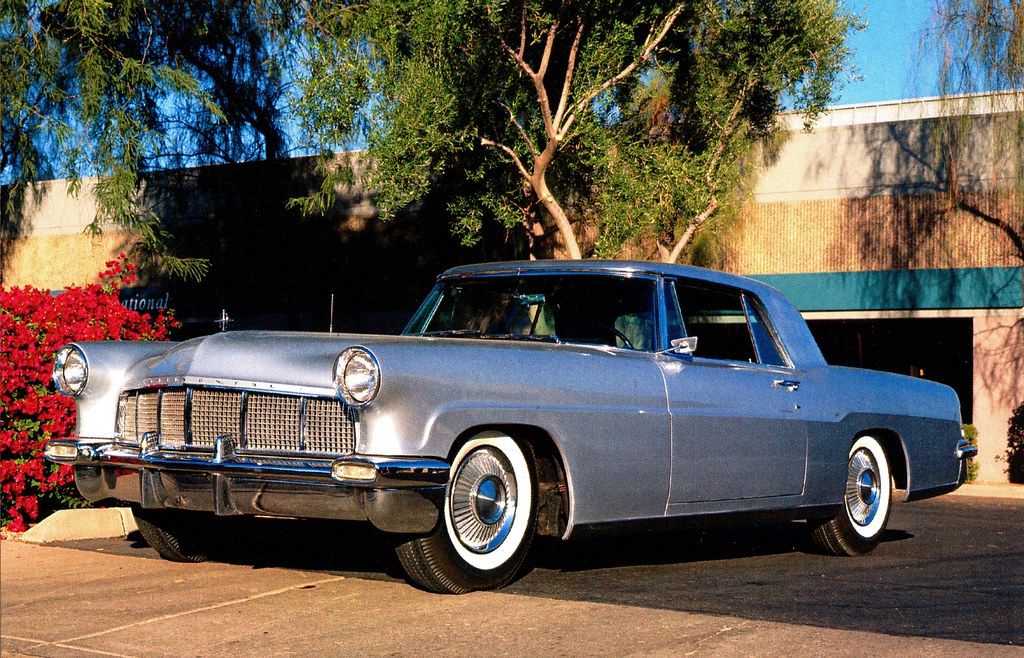
6. **Lincoln Continental Mark IV** The Lincoln Continental Mark IV, produced between 1972 and 1976, is an undisputed emblem of 1970s American luxury and distinctive design. This vehicle is immediately recognizable for its iconic opera windows, a stylish flourish that added a touch of exclusivity, and its incredibly long, sleek body that commanded attention on the road. Underneath its imposing hood lay a formidable 460 cubic inch V8 engine, ensuring that the Mark IV delivered a remarkably smooth and powerful ride, characteristic of the era’s grand touring machines.
Boomers found immense appeal in the Lincoln Continental Mark IV for its uncompromising luxury and unique styling. The vehicle’s interior was a sanctuary of comfort, meticulously designed with plush materials and ample space, offering a serene driving experience that was highly valued. Its distinctive exterior design, particularly the aforementioned opera windows and imposing grille, conveyed a sense of prestige and individuality that resonated with a generation appreciating bold, statement-making automobiles. It truly felt like a ‘personal luxury’ car in every sense.
However, for Millennials, the Mark IV often falls into the category of vehicles they tend to pass over, largely due to a combination of practical and perceptual barriers. Its sheer size is a significant drawback, making it cumbersome for daily driving and challenging to park in crowded urban environments. Compounding this issue is the car’s poor fuel economy, a major point of contention for a generation increasingly focused on efficiency and sustainability. There’s also the pervasive perception that it’s inherently a car for older generations, which can diminish its appeal to younger, trend-conscious buyers.
Therefore, despite its undeniably luxurious interior and unique styling, the practical drawbacks of the Lincoln Continental Mark IV are substantial. The vehicle’s high maintenance costs, combined with its large dimensions and thirst for fuel, collectively deter many younger buyers who prioritize convenience, lower operating expenses, and a more contemporary image. It remains a fascinating historical artifact, but one largely incompatible with the practical demands and preferences of the modern Millennial consumer.
Car Model Information: 2021 Jeep Grand Cherokee Laredo X
Manufacturer: Lincoln Motor Company
Caption: 1975 Continental Mark IV
Name: Mark IV
Production: 1971–1976
ModelYears: 1972–1976
BodyStyle: coupe
Layout: Front-engine, rear-wheel-drive layout
Engine: 460 cuin
Abbr: on
Assembly: Wixom Assembly,Wixom, Michigan
Transmission: Ford C6 transmission
Predecessor: Lincoln Continental Mark III
Wheelbase: 120.4 in
Length: 228.1 in
Width: 79.8 in
Height: 53.5 in
Weight: convert
Successor: Lincoln Continental Mark V
Related: Ford Thunderbird (sixth generation)
Categories: 1970s cars, All Wikipedia articles needing clarification, Articles with short description, Cars discontinued in 1976, Cars introduced in 1972
Summary: The Continental Mark IV is a personal luxury car that was marketed by the Lincoln division of Ford Motor Company from the 1972 to 1976 model years. The third generation of the Mark series, the Mark IV grew in size over its Continental Mark III predecessor. As with the previous generation, the Mark IV saw little direct competition in the American marketplace, competing nearly exclusively against the Cadillac Eldorado (redesigned for 1971).
As with the Mark III, the Mark IV shared its chassis with the Ford Thunderbird, with the Mark IV receiving its own bodywork below the windows. Hidden headlights and a faux Rolls-Royce chrome grille were retained, and a Continental spare tire trunklid. For 1976, the Designer Series option package was introduced; in what would become a tradition for the Mark series (and later Lincoln), the option consisted of specially coordinated exterior and interior trims developed between Lincoln and contemporary fashion designers.
Ford assembled the Continental Mark IV at its Wixom Assembly Plant in Michigan) facility alongside the Ford Thunderbird and the Lincoln Continental. For 1977, the Mark IV underwent a substantial revision, becoming the Continental Mark V.
Get more information about: Lincoln Continental Mark IV
Buying a high-performing used car >>>
Brand: Lincoln Model: Continental Mark IV
Price: $27,316 Mileage: 34,523 mi.
Read more about: Why Millennials Are Swerving Away: Unpacking the Rejection of 12 Classic Boomer Cars
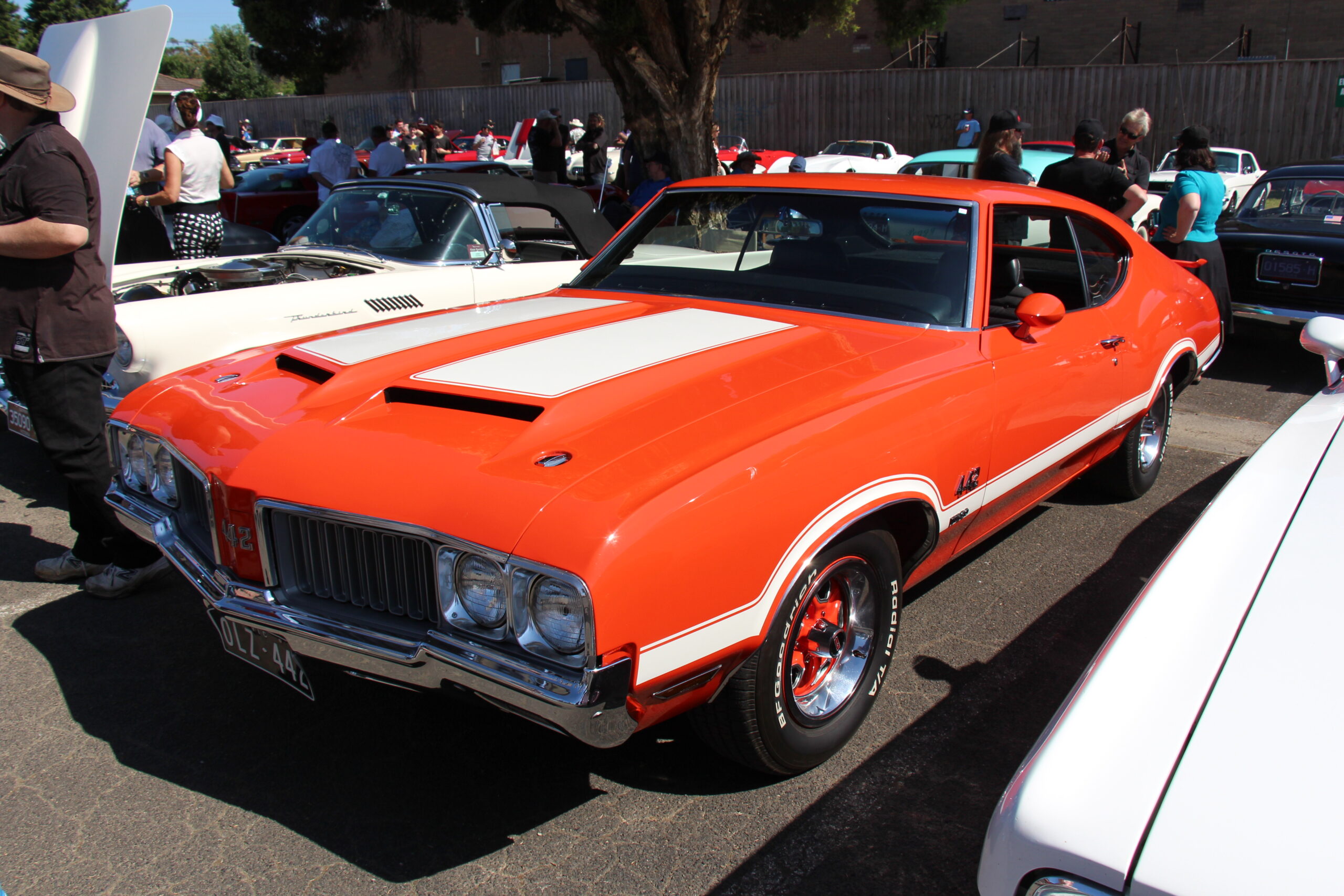
7. **Oldsmobile 442** The Oldsmobile 442, a celebrated classic muscle car produced from 1964 to 1987, is revered for its powerful V8 engines and unmistakably aggressive styling. The ‘442’ designation itself was iconic, traditionally standing for a specific and potent configuration: a four-barrel carburetor, a four-speed manual transmission, and dual exhausts – a formula for performance that captivated enthusiasts. It was a vehicle that wasn’t just fast; it looked fast, with design cues that screamed power and dominance on the American streetscape.
For the Boomer generation, the Oldsmobile 442 encapsulated the very essence of American muscle. Its classic muscle car appeal, driven by the exhilarating performance of its powerful V8 engines, offered an unmatched driving experience for the era. The iconic design, with its assertive stance and memorable badging, made it a symbol of automotive prowess and a desirable machine for those who sought speed and style. Owning a 442 was about experiencing raw power and being part of a vibrant car culture that celebrated high-octane performance.
Despite its storied legacy, Millennials frequently overlook the 442, a trend driven by modern automotive priorities. Fuel inefficiency is a major strike against it; the powerful V8s, while thrilling, are notoriously thirsty, clashing with contemporary environmental concerns and the desire for economical operation. High maintenance costs, typical of vintage performance vehicles, also present a significant hurdle, as parts can be harder to find and specialized labor more expensive. Furthermore, many younger buyers simply prefer the superior performance, reliability, and technological integration of modern performance cars.
While the Oldsmobile 442 undoubtedly offers a compelling classic muscle car appeal, along with powerful engines and iconic design, its practical drawbacks significantly limit its reach among younger enthusiasts. The blend of high running costs, the absence of modern comforts, and a preference for contemporary engineering mean that this vintage powerhouse, for all its historical significance, remains a niche interest rather than a widely sought-after vehicle for today’s Millennial car buyer.
Now, let’s continue our journey through these classic Boomer icons that, despite their rich heritage, struggle to capture the hearts and garages of the Millennial generation. Our focus shifts to further dissecting the practical challenges and contrasting generational preferences that define today’s automotive market. The gap isn’t just about aesthetics; it’s deeply rooted in build quality, driving dynamics, the insatiable desire for efficiency, modern amenities, and contemporary styling.
Car Model Information: 1969 Oldsmobile 442
Name: Oldsmobile 442
Manufacturer: Oldsmobile
ModelYears: 1964–1980,1985–1987,1990–1991
Class: Muscle car
Layout: FR layout
Caption: 1971 Oldsmobile 442
Categories: 1960s cars, 1970s cars, 1980s cars, All articles with unsourced statements, Articles with short description
Summary: The Oldsmobile 4-4-2 is a muscle car produced by Oldsmobile between the 1964 and 1987 model years. Introduced as an option package for US-sold F-85 and Cutlass models, it became a model in its own right from 1968 to 1971, spawned the Hurst/Olds in 1968, then reverted to an option through the mid-1970s. The name was revived in the 1980s on the rear-wheel drive Cutlass Supreme and early 1990s as an option package for the new front-wheel drive Cutlass Calais.
The “4-4-2” name (pronounced “Four-four-two”) derives from the original car’s four-barrel carburetor, four-speed manual transmission, and dual exhausts. It was originally written “4-4-2” (with badging showing hyphens between the numerals), and remained hyphenated throughout Oldsmobile’s use of the designation. Beginning in 1965, the 4-4-2s standard transmission was a three-speed manual along with an optional two-speed automatic and four-speed manual, but were still badged as “4-4-2″s.
Because of this change, from 1965 on, according to Oldsmobile brochures and advertisements, the 4-4-2 designation referred to the 400 cubic inch engine, four-barrel carburetor, and dual exhausts. By 1968, badging was shortened to simply “442”, but Oldsmobile brochures and internal documents continued to use the “4-4-2” model designation.
Get more information about: Oldsmobile 442
Buying a high-performing used car >>>
Brand: Oldsmobile Model: 442
Price: $43,990 Mileage: 24,000 mi.
Read more about: Why Millennials Are Swerving Away: Unpacking the Rejection of 12 Classic Boomer Cars
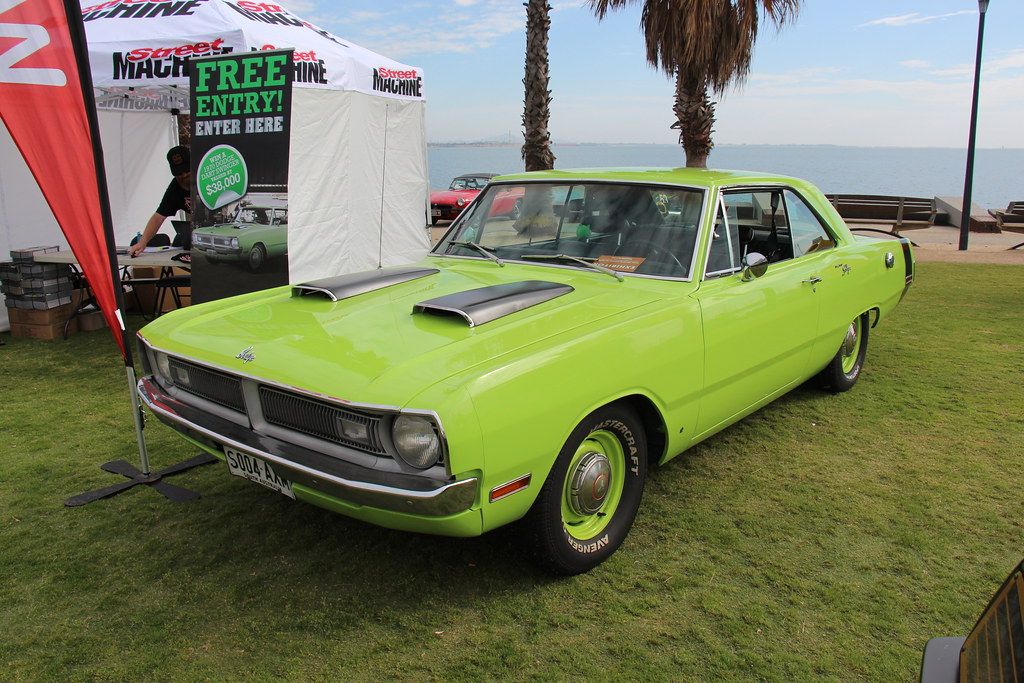
8. **Dodge Dart Swinger**The Dodge Dart Swinger, produced from 1967 to 1976, was a popular compact muscle car known for its lightweight design and a range of powerful V8 engine options. It offered an affordable and fun performance experience, injecting excitement into daily driving without being overly ostentatious. This made it a compelling choice for many seeking accessible automotive thrills.
Boomers particularly cherished the Dart Swinger for its blend of spirited performance and practical size. Its nimble handling and V8 power delivered a quintessential muscle car feel in a more manageable package. It epitomized an era where performance cars were widely accessible, making it a nostalgic symbol of youthful vigor and straightforward automotive enjoyment.
However, Millennials often pass over the Dart Swinger due to its dated technology, lacking modern infotainment, advanced safety features, and connectivity. Its lower build quality compared to today’s vehicles often translates to a less refined ride and higher maintenance concerns. Younger buyers prioritize convenience, robust safety, and the reliability of modern engineering, pushing this vintage gem into the background.
Car Model Information: 1972 Dodge Dart Swinger
Name: Dodge Dart
Caption: 1966 Dodge Dart GT 2-door hardtop
Manufacturer: Dodge
Production: 1959–1976 (US market)
1969-1981 (Brazil)
AlternativeName: Charger (Brazil)
ModelYears: 1960–1976 (US market)
1970-1981 (Brazil)
Class: Full-size
Layout: FR layout
Predecessor: Dodge Coronet#Fourth generation (1957–1959)
Related: Plymouth Valiant,Chrysler Valiant,Dodge Phoenix
Successor: Dodge Aspen,Dodge Diplomat,Talbot Tagora
Categories: 1970s cars, All articles with unsourced statements, Articles with short description, Articles with unsourced statements from December 2023, Articles with unsourced statements from May 2025
Summary: The Dodge Dart is a line of passenger cars produced by Dodge from the 1959 to 1976 model years in North America, with production extended to later years in various other markets.
The production Dodge Dart was introduced as a lower-priced full-size model in 1960 and 1961, but became a mid-size car for one model year for 1962, and was then reduced to a compact for two generations, from 1963 to 1976.
Chrysler had first used ‘Dart’ name plates on two Italian styled show cars, in 1956 and 1957, before it became a Dodge model name. The Dart nameplate was resurrected for a Fiat-derived compact car that was introduced in 2012.
Get more information about: Dodge Dart
Buying a high-performing used car >>>
Brand: Dodge Model: Dart
Price: $18,900 Mileage: 40,424 mi.
Read more about: Why Millennials Are Swerving Away: Unpacking the Rejection of 12 Classic Boomer Cars
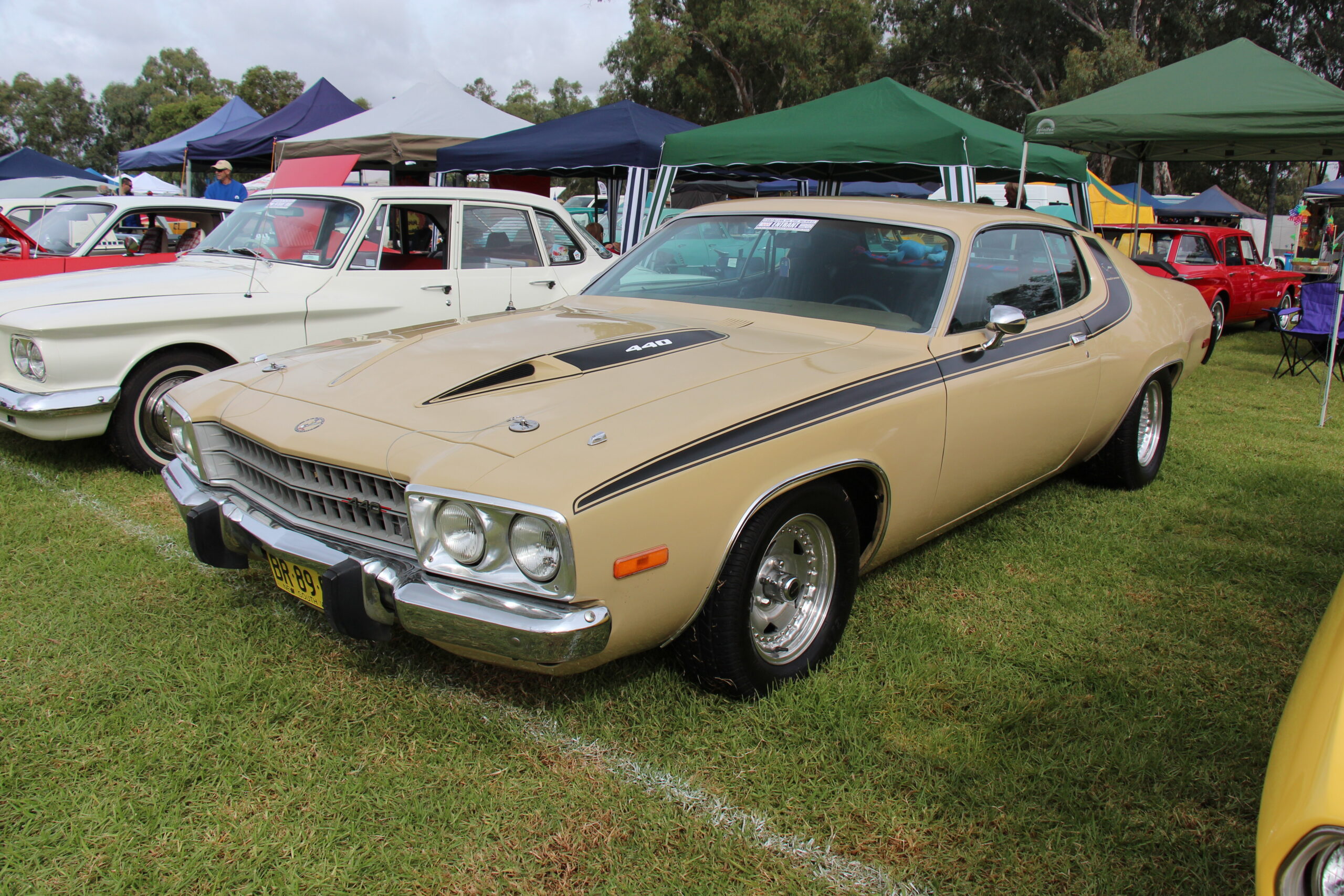
9. **Plymouth Road Runner**The Plymouth Road Runner, produced from 1968 to 1980, stands as an iconic muscle car, celebrated for its pure performance and no-frills philosophy. Designed for speed, it delivered on its promise with a range of potent V8 engines. The car’s focus on raw power over lavish extras, even borrowing its name and cartoon imagery, made it a distinct and memorable entry in the performance market.
Boomer enthusiasts deeply admired the Road Runner’s raw power and straightforward approach to muscle car thrills. It prioritized horsepower and torque, offering a visceral driving experience directly connected to the road. This vehicle embodied an era where driving was an exhilarating, mechanical endeavor, making it a nostalgic favorite for those who valued direct performance.
Conversely, Millennials frequently overlook the Road Runner due to its significant fuel inefficiency; its large, powerful V8 engines are notoriously thirsty, clashing with modern environmental concerns and the desire for economical operation. High maintenance costs, typical of vintage performance vehicles, also present a substantial financial hurdle. These practical drawbacks significantly limit its appeal to a generation prioritizing efficiency and reliability.
Car Model Information: 2021 Jeep Grand Cherokee Laredo X
Name: Plymouth Road Runner
Assembly: Detroit,Michigan
Manufacturer: Plymouth (automobile)
Class: Mid-size car
Production: 1968–1980
Related: unbulleted list
Layout: FR layout
Categories: 1970s cars, 1980s cars, All articles needing additional references, All articles with peacock terms, All articles with unsourced statements
Summary: The Plymouth Road Runner is a muscle car introduced by Chrysler in the United States for the 1968 model year and marketed under its Plymouth brand. Initially based on the Belvedere, the brand’s basic mid-size model, the Road Runner combined a powerful engine with a spartan trim level and a price that undercut increasingly upscale and expensive muscle cars such as the Pontiac GTO and Plymouth’s own GTX. It was initially a sales success.
The Road Runner was built in three generations on the mid-size B platform. Like most muscle cars, its performance and sales declined in the 1970s due to an increasing focus on fuel economy and the adoption of more stringent U.S. emission standards. The nameplate became to a trim package for the compact Plymouth Volaré for model year 1976—no longer offering any special performance capability—and was discontinued in 1980.
Get more information about: Plymouth Road Runner
Buying a high-performing used car >>>
Brand: Plymouth Model: Road Runner
Price: $27,316 Mileage: 34,523 mi.
Read more about: Why Millennials Are Swerving Away: Unpacking the Rejection of 12 Classic Boomer Cars

10. **Mercury Cougar**The Mercury Cougar, which graced American roads from 1967 to 2002, initially served as an upscale, more refined counterpart to the Ford Mustang. It presented a compelling blend of performance and comfort, featuring various powerful V8 engines and interiors that offered a touch more luxury than its pony car sibling. The Cougar aimed to appeal to those desiring muscle car spirit with added sophistication.
For the Boomer generation, the Cougar represented an appealing synthesis of elegance and raw power. Its stylish design and luxurious appointments provided a distinctive identity without sacrificing thrilling performance. It was revered for its ability to deliver a spirited driving experience while maintaining a sense of prestige, making it a highly desirable vehicle for those appreciating both form and function.
However, Millennials often pass over the Mercury Cougar due to its considerable size, which can be impractical for urban driving and parking. Its inherent fuel inefficiency, particularly in V8-powered iterations, runs counter to younger generations’ focus on economic and environmentally conscious transportation. Furthermore, the perception of it being an “older generation’s car” creates a significant psychological barrier against its vintage charm.
Car Model Information: 1995 Mercury Cougar XR7
Name: Mercury Cougar
Caption: 1969 Mercury Cougar (first generation)
Manufacturer: Mercury (automobile)
Layout: Front-engine, rear-wheel-drive layout
ModelYears: 1967–1997,1999–2002
Class: Pony car,Personal luxury car,Mid-size car,Sport compact
Categories: 1960s cars, 1970s cars, 1980s cars, 1990s cars, 2000s cars
Summary: The Mercury Cougar is a series of automobiles that was sold by Mercury from 1967 to 2002. The model line is a diverse series of vehicles; though the Cougar nameplate is most commonly associated with two-door coupes, at various stages in its production, the model also was offered as a convertible and a hatchback. During its production as the mid-size Mercury line, the Cougar was also offered as a four-door sedan and five-door station wagon.
In production for 34 years across eight generations (skipping the 1998 model year), the Cougar is second only to the Grand Marquis (36 years) in the Mercury line for production longevity. 2,972,784 examples were produced, making it the highest-selling Mercury vehicle. During the 1970s and 1980s, the marketing of the Mercury division was closely associated with the Cougar, with promotional materials advertising Mercury dealers as “The Sign of the Cat” with big cats atop Lincoln-Mercury dealer signs. Cat-related nameplates were adopted by other Mercury lines, including the Bobcat and Lynx.
During its production, the Cougar was assembled at the Dearborn Assembly Plant (part of the Ford River Rouge Complex) in Dearborn, Michigan from 1967 until 1973, San Jose Assembly (Milpitas, California) from 1968 into early 1969, Lorain Assembly (Lorain, Ohio) from 1974 until 1997, and at Flat Rock Assembly (Flat Rock, Michigan) from 1999 through 2002.
Get more information about: Mercury Cougar
Buying a high-performing used car >>>
Brand: Mercury Model: Cougar
Price: $10,995 Mileage: 37,589 mi.
Read more about: Why Millennials Are Swerving Away: Unpacking the Rejection of 12 Classic Boomer Cars
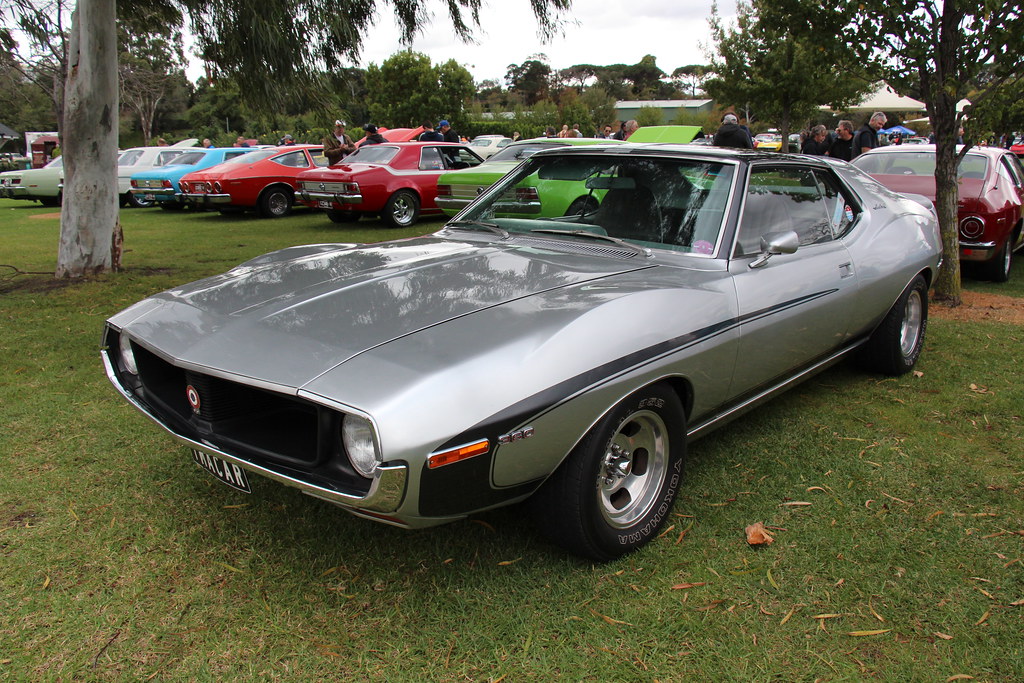
11. **AMC Javelin**The AMC Javelin, produced from 1968 to 1974, stands out as a distinctive and often overlooked classic muscle car, recognized for its unique styling and admirable performance capabilities. It offered a range of robust V8 engines, including the potent 401 cubic inch option, ensuring exhilarating drives. The Javelin’s bold aesthetics and competitive spirit solidified its place as a formidable alternative American performance machine.
Boomer enthusiasts often appreciated the Javelin for its individuality and muscle car heritage. It provided a powerful driving experience with a design that truly stood out from the crowd, offering a compelling alternative to more common pony cars. For many, it represented an unconventional choice that still delivered on performance, making it a cherished part of the muscle car landscape.
However, Millennials tend to overlook the Javelin due to its pronounced fuel inefficiency, a significant factor given rising fuel costs and environmental awareness. Its powerful V8 engines are simply not aligned with the desire for economical operation. Additionally, the specialized nature of AMC parts often leads to higher maintenance costs and challenges in finding qualified technicians, further adding to its practical drawbacks for younger buyers.
Read more about: Why Millennials Are Swerving Away: Unpacking the Rejection of 12 Classic Boomer Cars
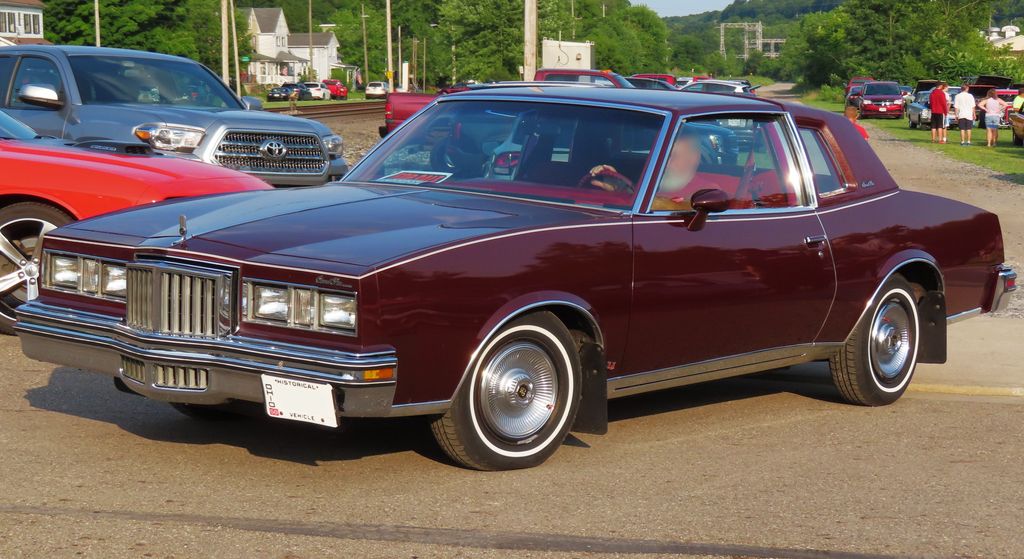
12. **Pontiac Grand Prix**The Pontiac Grand Prix, a versatile vehicle with a long production history from 1962 to 2008, began as a popular personal luxury car before evolving into a mid-size sedan. Throughout its various iterations, it consistently blended powerful V8 engines with stylish designs, aiming to provide both performance and a comfortable, upscale driving experience. It was a car that adapted while retaining a distinct sense of presence.
Boomers found significant appeal in the Grand Prix for its stylish design and the comfortable, often luxurious, driving experience it offered. The availability of powerful engines meant drivers didn’t sacrifice performance for comfort, making it a popular choice for a refined yet capable vehicle. It embodied automotive elegance combined with American power, fitting perfectly into the personal luxury segment of its era.
Nevertheless, Millennials frequently pass over the Grand Prix for familiar reasons: its substantial size can be unwieldy for modern urban settings and parking. Its fuel inefficiency, a hallmark of many V8-powered classics, is a major deterrent for a generation focused on lower running costs and environmental impact. The perception of it being an “older generation’s car” further diminishes its appeal.
Car Model Information: 2021 Jeep Grand Cherokee Laredo X
Name: Pontiac Grand Prix
Caption: 2004–2008 Pontiac Grand Prix
Manufacturer: Pontiac (automobile)
ModelYears: 1962–2008
Class: Personal luxury car
Layout: Front-engine, rear-wheel-drive layout
Successor: Pontiac G8
Platform: unbulleted list
Categories: 1960s cars, 1970s cars, 1980s cars, 1990s cars, 2000s cars
Summary: The Grand Prix is a line of automobiles produced by the Pontiac Division of General Motors from 1962 until 2002 as coupes and from 1989 through 2008 model years as four-door sedans.
First introduced as a full-size performance coupe for the 1962 model year, the model repeatedly varied in size, luxury, and performance over successive generations. The Grand Prix was the most expensive coupe Pontiac offered until the 1970s, when the Bonneville Brougham and the Firebird Trans Am became more exclusive; the Grand Prix moved into the intermediate personal luxury car and later the mid-size market segments.
All Grand Prixs from 1962 through 1972 were pillarless hardtops (except for the 1967 convertible).
Get more information about: Pontiac Grand Prix
Buying a high-performing used car >>>
Brand: Pontiac Model: Grand Prix
Price: $27,316 Mileage: 34,523 mi.
Read more about: Why Millennials Are Swerving Away: Unpacking the Rejection of 12 Classic Boomer Cars
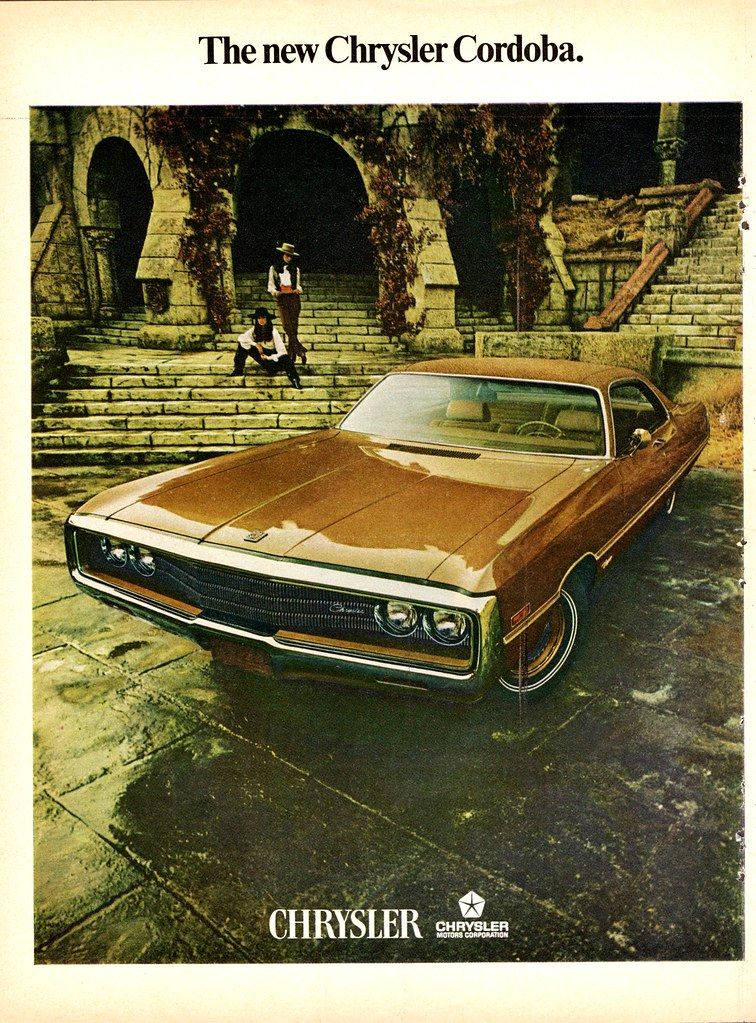
13. **Chrysler Cordoba**The Chrysler Cordoba, produced from 1975 to 1983, became synonymous with personal luxury, celebrated for its plush interiors and distinctive styling. It was designed to offer a comfortable and stylish ride, featuring a range of V8 engines that provided smooth, unhurried power. The Cordoba was a statement of refined taste and comfort, lending it an air of accessible luxury.
For Boomers, the Cordoba represented an appealing blend of classic design and luxurious comfort. Its opulent interiors, often featuring velour fabrics and rich detailing, created a truly indulgent driving environment. The car’s distinctive exterior styling and smooth V8 power delivery solidified its status as a desirable personal luxury coupe, speaking to a generation that valued comfort, prestige, and flair.
However, Millennials frequently overlook the Cordoba, citing its substantial size as a primary drawback, deemed impractical for modern urban living and tight parking. Its poor fuel economy clashes sharply with Millennial priorities of environmental responsibility and economic efficiency. The car’s general perception as an “older generation’s car” further compounds its lack of appeal.
Car Model Information: 1977 Chrysler Cordoba
Assembly: Windsor Assembly,Windsor, Ontario
Name: Chrysler Cordoba
Caption: 1978 Chrysler Cordoba
Manufacturer: Chrysler Corporation
Class: Personal luxury car
ModelYears: 1970,1975–1983
Predecessor: Chrysler 300 non-letter series
Successor: Chrysler Laser
BodyStyle: coupe
Layout: Front-engine, rear-wheel drive layout
Categories: 1980s cars, Articles with short description, Cars introduced in 1975, Chrysler vehicles, Commons category link from Wikidata
Summary: The Chrysler Cordoba was introduced as a full-sized luxury car based on the Chrysler Newport that was marketed during the 1970 model year. It was also applied to a show car exhibited that year.
The nameplate was then applied to an intermediate-sized two-door personal luxury car starting with the 1975 model year. The Cordoba was manufactured by Chrysler in North America over two generations until the 1983 model year.
The personal luxury version was the company’s first model produced specifically for that market segment and the first Chrysler-branded vehicle smaller than full-size.
The name was taken from the Spanish city of Córdoba, Spain.
Get more information about: Chrysler Cordoba
Buying a high-performing used car >>>
Brand: Chrysler Model: Cordoba
Price: $22,000 Mileage: 30,467 mi.
Read more about: Remember These? 23 Once-Famous Car Brands That Are Gone
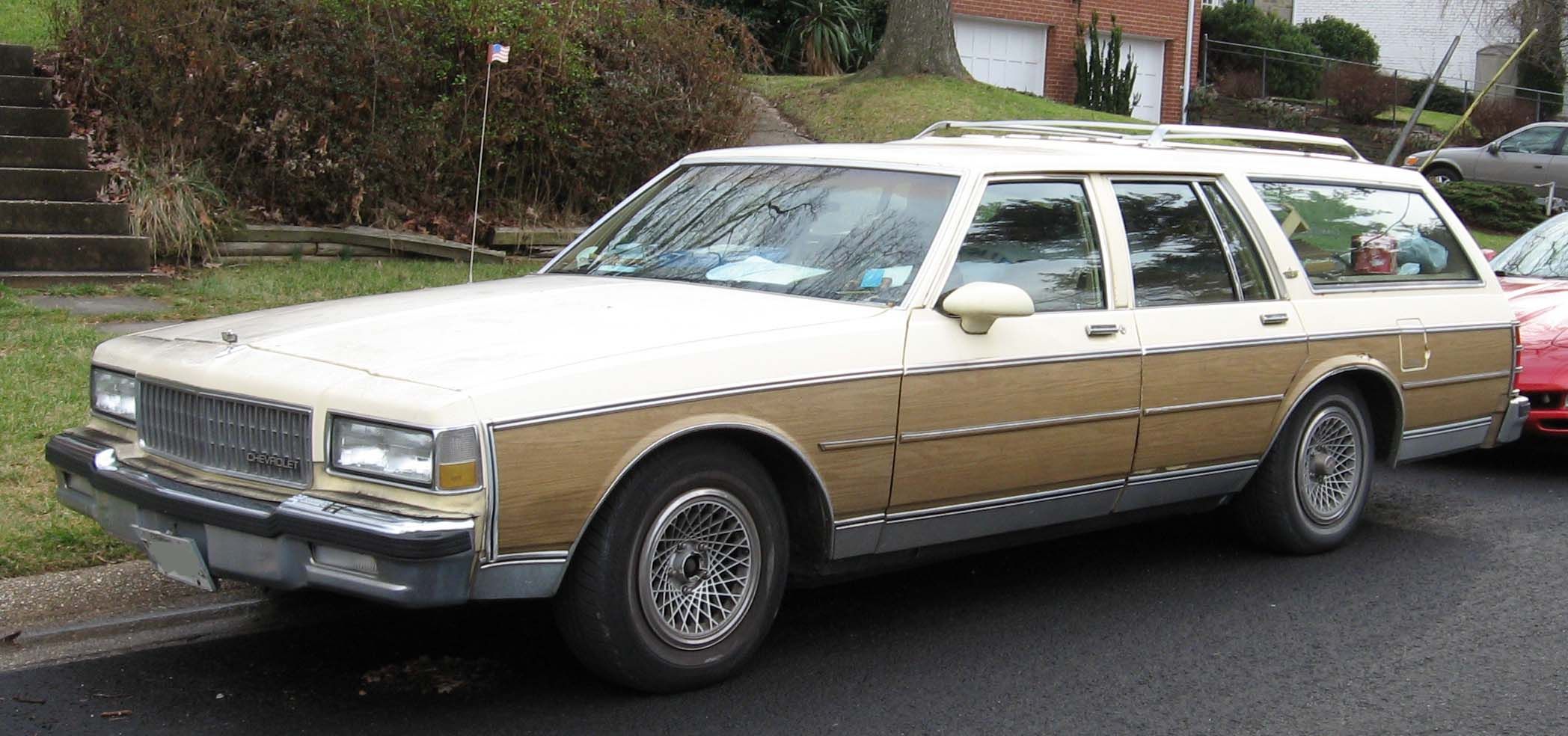
14. **Chevrolet Caprice**The Chevrolet Caprice, with a long and storied production run from 1965 to 1996, was a quintessential full-size sedan, renowned for its remarkably spacious interiors and exceptionally smooth ride. Featuring a reliable range of V8 engines, the Caprice was a popular choice among families and those seeking comfortable, dependable transportation. It served as a workhorse and a symbol of mainstream American comfort for decades.
Boomers fondly recall the Caprice as a highly practical and comfortable vehicle, often serving as the family car for long road trips and daily commutes. Its spaciousness and smooth ride made it ideal for carrying passengers and cargo, while its V8 engines provided ample power for highway cruising. The Caprice represented a period of automotive design focused on comfort, reliability, and spacious utility, cementing its place in countless family memories.
Yet, Millennials often pass over the Caprice due to its considerable size, now viewed as cumbersome for urban driving and parking. The car’s poor fuel economy, a direct consequence of its large V8 engines and heavy body-on-frame construction, stands in stark contrast to the younger generation’s emphasis on efficiency and environmental concerns. The perception that it is an “older generation’s car” also contributes significantly to its lack of appeal.
Car Model Information: 1996 Chevrolet Caprice Classic
Name: Chevrolet Caprice
Caption: Chevrolet Caprice PPV
Manufacturer: unbulleted list
Production: unbulleted list
ModelYears: unbulleted list
Predecessor: unbulleted list
Class: Full-size car
Platform: unbulleted list
Layout: FR layout
Categories: 1970s cars, 1980s cars, 1990s cars, 2000s cars, 2010s cars
Summary: The Chevrolet Caprice is a full-size car produced by Chevrolet in North America for the 1965 through 1996 model years. Full-size Chevrolet sales peaked in 1965, with over a million units sold. It was the most popular car in the U.S. in the 1960s and early 1970s, which, during its production, included the Biscayne, Bel Air, and Impala.
Introduced in mid-1965 as a luxury trim package for the Impala four-door hardtop, Chevrolet offered a full line of Caprice models for the 1966 and subsequent model years, including a “formal hardtop” coupe and an Estate station wagon. The 1971 through 1976 models are the largest Chevrolets built. The downsized 1977 and restyled 1991 models were awarded Motor Trend Car of the Year. Production ended in 1996.
From 2011 until 2017, the Caprice nameplate returned to North America as a full-size, rear wheel drive police vehicle, a captive import from Australia, built by General Motors’s subsidiary Holden. The police vehicle is a rebadged version of the Holden WM/WN Caprice. The nameplate also had a civilian and police presence in the Middle East from 1999 until 2017, where the imported Holden Statesman/Caprice built by Holden was marketed as the Chevrolet Caprice in markets such as Saudi Arabia and the UAE.
Get more information about: Chevrolet Caprice
Buying a high-performing used car >>>
Brand: Chevrolet Model: Caprice
Price: $34,691 Mileage: 35,241 mi.
Read more about: 15 Cars That Become Costly Money Pits After 100,000 Miles: Essential Insights for Savvy Buyers
This extensive exploration into the world of classic Boomer cars and their reception among Millennials reveals a profound shift in what constitutes an appealing vehicle. The grand, powerful, and often thirsty machines that defined a generation’s aspirations now face a modern scrutiny focused on efficiency, technological integration, and practical urban usability. It’s not simply a matter of taste, but a reflection of evolving societal values, economic realities, and a desire for cars that align with a more connected and environmentally aware lifestyle. While the nostalgia for these automotive legends remains potent for many, the future of the car market is undoubtedly being shaped by a new generation with entirely different priorities, leaving many revered classics to be admired from afar, rather than driven daily.



